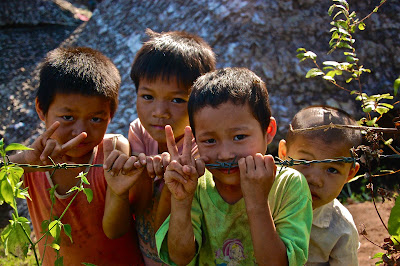In Chiang Mai, the northernmost city of Thailand, many restaurants, venues, and bars cater to the carnal pleasures of tourists and locals alike. One bar however, stands out among the others: the Can Do Bar is proudly owned and operated by a female collective of empowered sex workers.
Currently employing 20 workers, the Can Do Bar provides opportunities for female sex workers rarely ever offered in Thailand’s sex industry, such as: payment at (or above) minimum wage, 10 paid holidays, observance of 13 public holidays throughout the year, voluntary overtime at full pay, and paid sick leave. The workers are encouraged to join a union, or association, given full rights to settle disputes in a labor court, as well as instant access to contraceptives, and other safer sex methods, and an educational center on the second floor, above the bar.
Can Do Bar was formed by a group of sex workers frustrated with being controlled for profit, who quit, or fled their former sex houses, banded together, and pooled the initial Baht needed to start their independent collective. While working along the Myanmar border in northern Thailand, I decided to seek out this collective to experience, and understand this new approach to sex work.
Entering the Can Do Bar on a warm, fall evening, you get the impression of an intimately friendly den, instead of a booming nightclub; stings of thin, red lights outline the room’s frame, casting a soft, warm glow across the bar’s dark colored wood, and over the floor to the tables in the far corners. A staircase, with a large centerpiece photograph of a client in the midst of a sponge-bath, wraps around to the second, and third floors with bedrooms, and the education center.
Visiting the night before the bar’s large, Climate Change Cocktail Party, I interviewed the three women working that evening: Mai, Pae, and Oa. When asked over drinks of Whiskey what message they wanted to convey to other sex workers, their replies were confident.
"The Can Do Bar is fair bar" Mae told me simply. "It’s fun, and it’s enjoyable to be here. It’s not always work either. Sometimes we come here when we’re not working to dance, and sing with our friends. We also host social events, and fund raisers for our programs, as well as other organizations we agree with, and want to help support.”
Pae explained that the bar is not merely a place for people to find sex, but that it is a space for organizers, and friends of the movement to spread awareness about sex worker cooperatives. “Sex workers can open their own business, be their own boss, and take care of themselves," Pae said.
Oa expressed, "We can work, be artists (sex work as an act of art), and be safe all at the same time. We live here, and work in good conditions. Every bar can be like us with enough time, and effort.”
There are no exact figures as to the total number of sex workers in Thailand, but a conservative estimate puts the number around 20,000-40,000 women, with a large portion being underage minors. At this time, sex trafficking places many Thai sex workers in the dangerous positions of forced servitude.
The Empower Foundation is the focal advocate, and co-collaborator of the Can Do Bar’s undertaking, since its foundation in 2006. An organization of predominately western, third-wave feminists, Empower Foundation strives to build women’s confidence so they have a stronger foundation to express their preferences and assert their rights. The Empower Foundation views education and literacy as a fundamental part of building confidence, and it provides educational programs to over 30,000 sex workers throughout Thailand, many of whom are receiving education for the very first time in their life. They host classroom style education sessions in Phatpong Alley (a center of prostitution in Bangkok), as well as the southern island of Phuket, the town of Mae Sai, and the city of Chiang Mai.
Before leaving the bar, I met with Liz Hilton, a representative for the Empower Foundation, to discuss the Can Do Bar’s achievements.
“The Empower Foundation and the Can Do Bar were born out of sex worker frustration" Liz explained. "Workers voiced concerns to their government, but with no active response, they decided to pool together in a collective effort to show that their jobs can be done safely, and responsibly."
"We recently exceeded a global population of 7 billion people" Liz continued. "That means there have been at least 7 billion sexual acts. The global community does not seem to have a problem with this fact, and regards sex as a natural, private, and personal act. That is, until money comes into the equation. Then governments, businesses, and fundamental feminists (traditional first-wave feminists) all feel the need to intervene."
“Women have a right to do whatever they choose with their lives, and should be given autonomy to proceed in a positive way. That is what we are doing here. That is what the women of the Can Do Bar are doing."
With thousands of women involved in Thailand’s sex industry, the struggle to secure fair wages, the necessities of education, medical care, and access to contraceptives is an immense task. The thousands of workers denied these essentials each day urgently need change to this system.
Leaving the bar, and looking back at the lights illuminating the painted Can Do sign, I am inspired by these women’s stories, and by seeing what can be accomplished when determined individuals organize. By working together as a collective to empower sex workers, the Can Do Bar shows us the true strength of women when they claim their workplace and sexual rights, and define their own future.
---------
To learn more about the Empower Foundation in Thailand: www.empowerfoundation.org/barcando_en.html
To Learn more about sex work unionization in the Bay Area:
http://uspros.net/










































